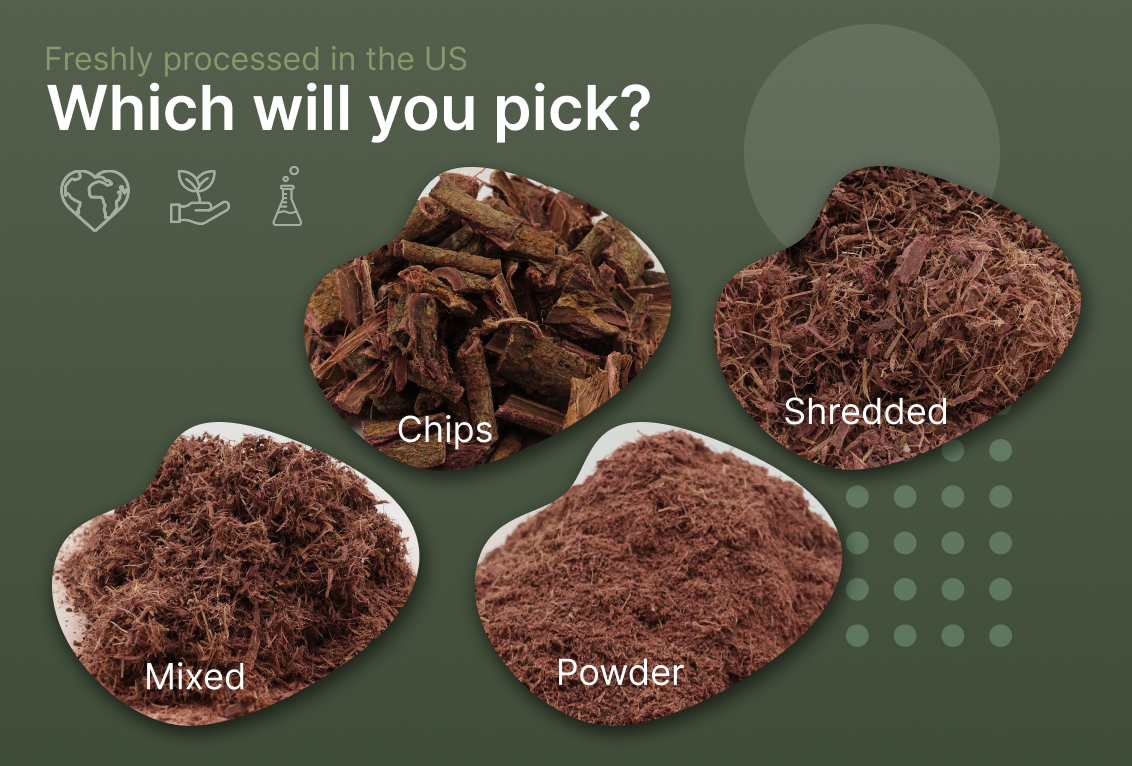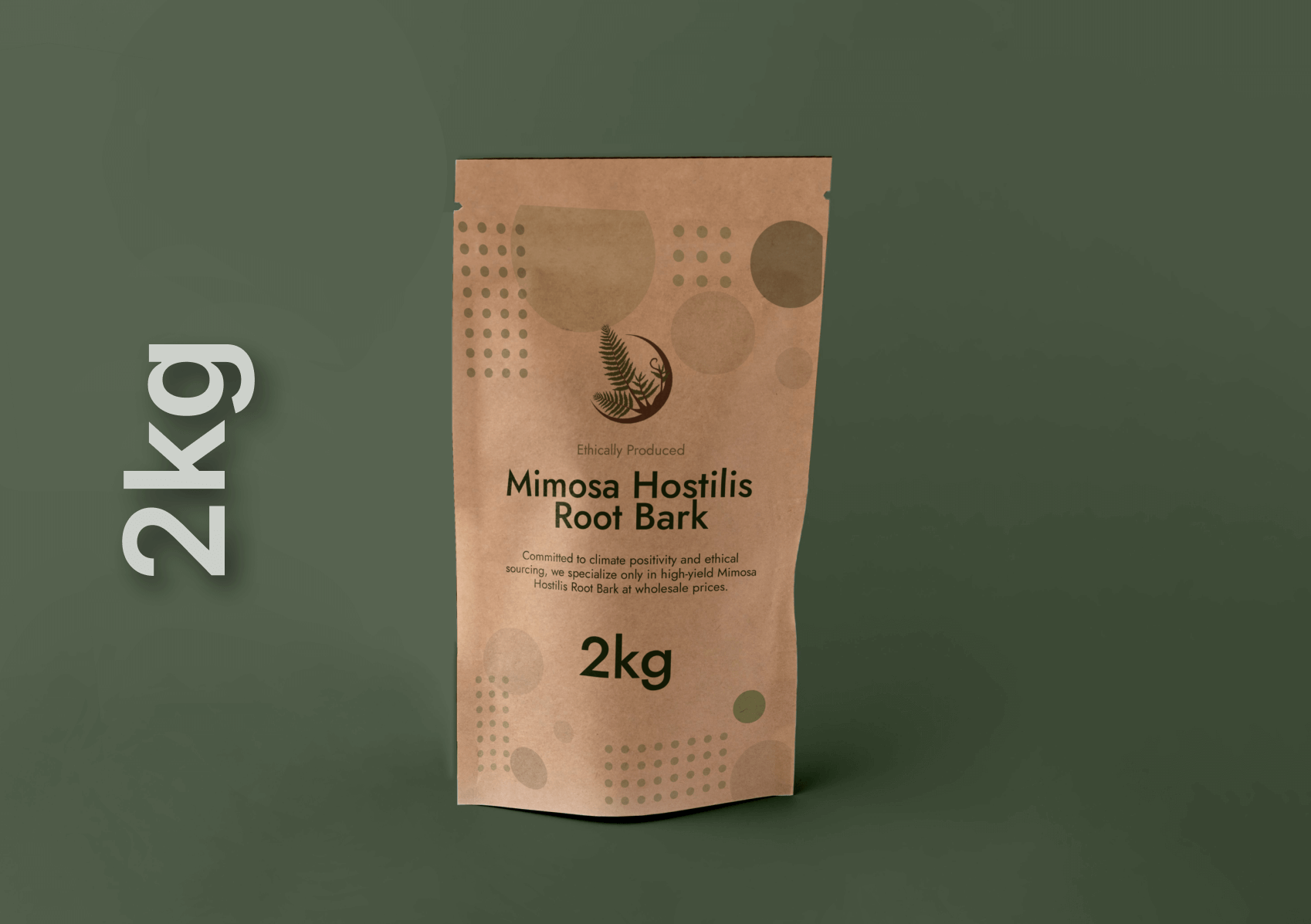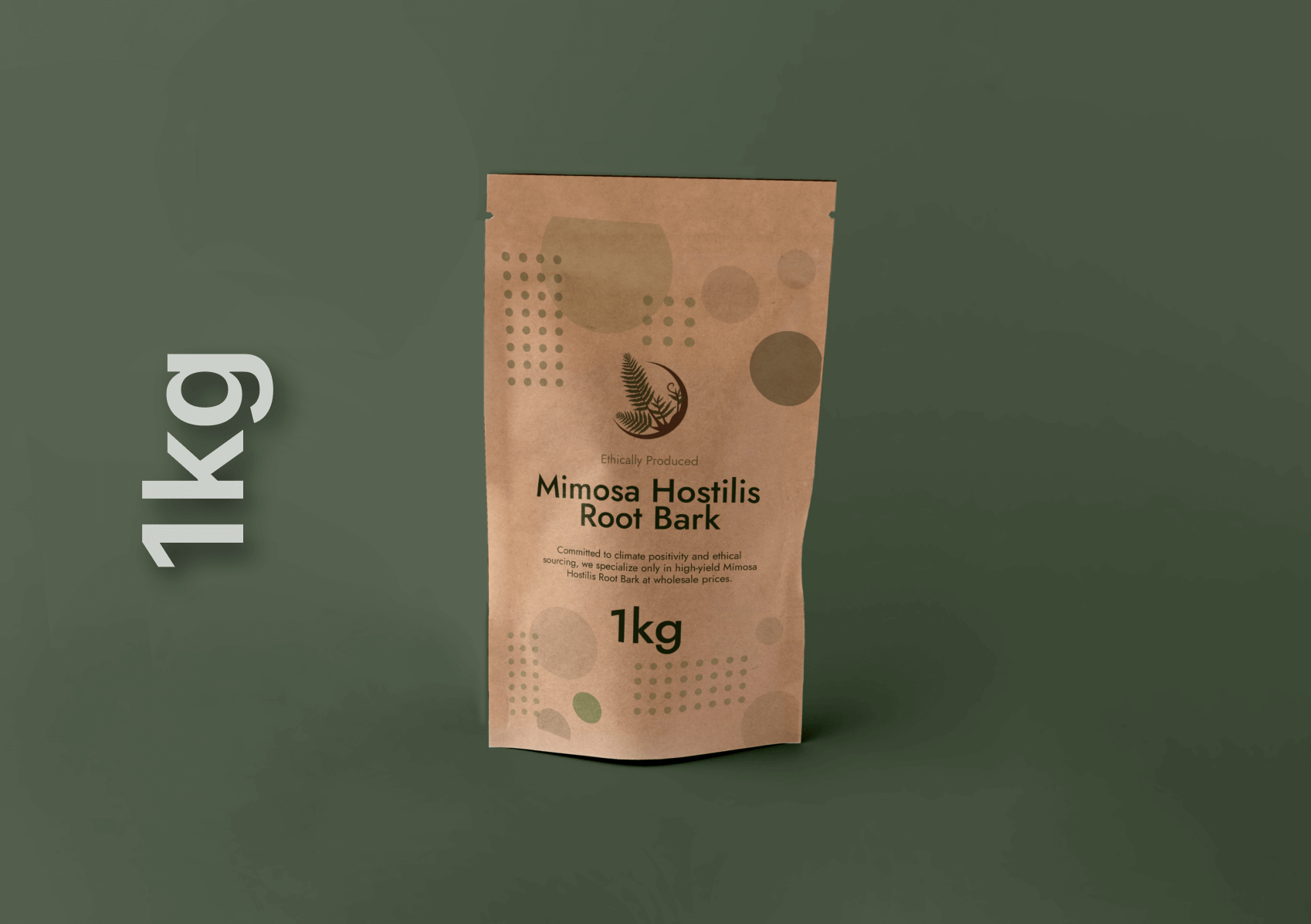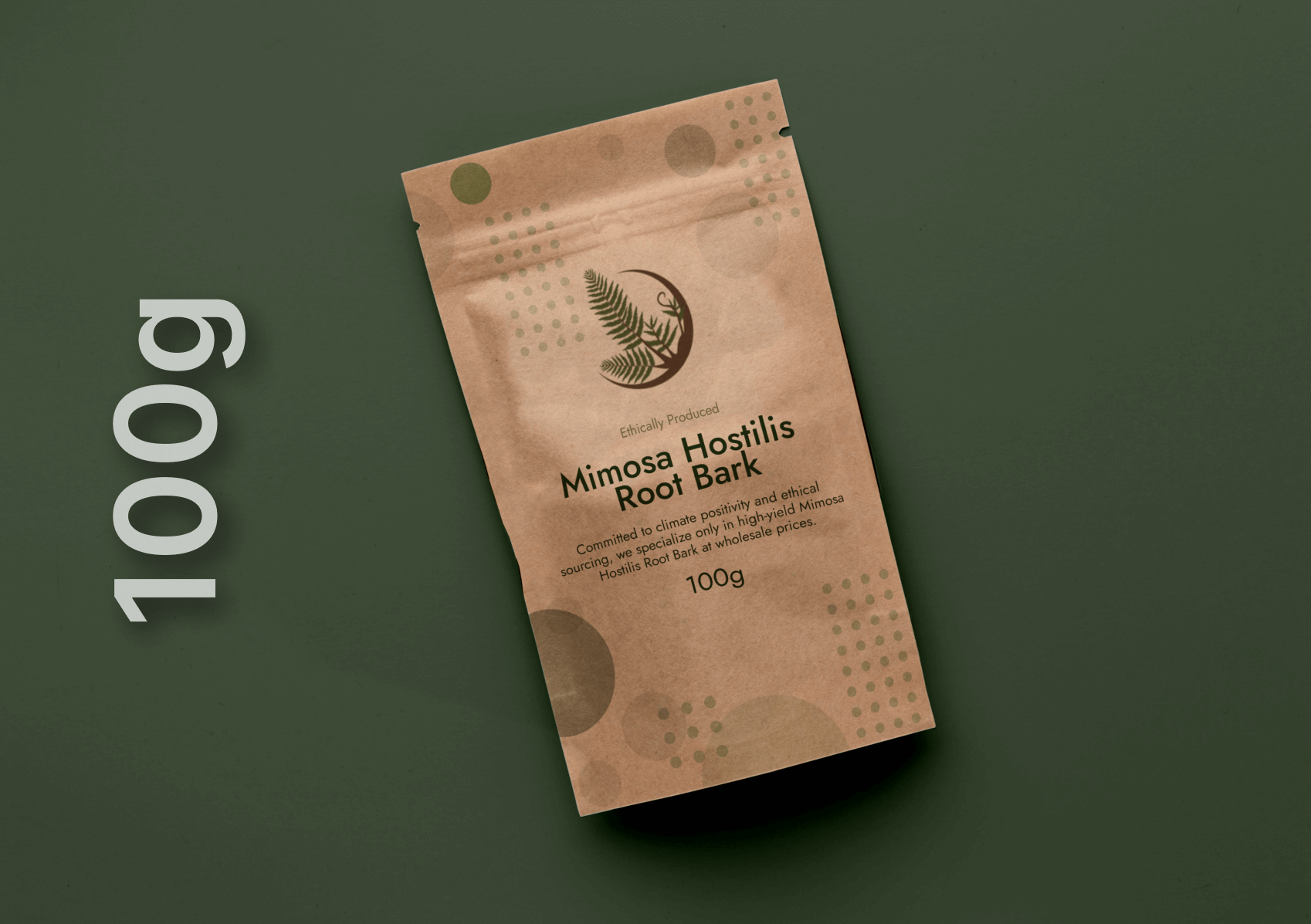Mimosa hostilis, or Mimosa tenuiflora, has rapidly gained a solid reputation in both ancient traditional medicine and modern herbalism because it contains a rich plethora of chemical compounds, particularly in root bark. It stands alone in an unsaturated market filled with potent botanicals, including Ayahuasca materials (like Banisteriopsis caapi and Psychotria viridis), Acacia confusa, Peganum harmala, and Chacruna.
What makes Mimosa hostilis so fascinating—and what sets it apart from these contenders is not just its psychoactive potential, but its powerful applications in skin regeneration, its historical use in indigenous cultures, and its chemical complexity. In this article, we’ll explore these elements and compare Mimosa hostilis with other prominent botanicals to understand what truly makes it unique.
The Botanical Profile of Mimosa Hostilis
Botanical Origins and Growth Habitat
Mimosa hostilis occurs naturally in northeast Brazil and Mexico, where naturally it grows in semi-arid environments and poor dry soils. It is a perennial tree known for its very robust nature and high ability to regrow, properties that make it highly valued for application in sustainable agroforestry.
Chemical Composition
The Mimosa hostilis root bark is highly concentrated in active constituents, with the dominant one being N,N-Dimethyltryptamine (DMT). Chemically, what makes it different from certain other plant material is the extremely high concentration of DMT, often more than 1%, and a complex matrix of flavonoids, tannins, and triterpenoid saponins, which are responsible for psychoactive and dermal therapeutic effects.
Mimosa Hostilis vs. Acacia Confusa
Chemical Comparison
Both Mimosa hostilis and Acacia confusa both have DMT in them and a favorite ingredients for entheogenic beverages. But:
- The bark of Acacia confusa has both DMT mixed with NMT (N-Methyltryptamine) present, which can affect the characteristics of the final brew.
- Root bark of Mimosa hostilis is cleaner in terms of alkaloid profile with more DMT concentration and less presence of secondary amines.
Ease of Preparation
Since Mimosa hostilis root bark is fibrous and has low levels of fat, it is easier to process and requires less defatting than Acacia confusa, which typically requires additional purification processes for clean extractions.
Mimosa Hostilis vs. Ayahuasca Components
Banisteriopsis caapi and Psychotria viridis
Ayahuasca traditionally consists of the blending of Banisteriopsis caapi (indigenous MAOI) and Psychotria viridis (DMT source). Unlike Mimosa hostilis, here the action of MAO inhibitors with tryptamines is utilized for inducing oral psychoactivity.
Single-Plant Potency
Mimosa hostilis on its own does not contain any natural MAOIs, but mixed with Peganum harmala or B. caapi, it can replicate or even intensify the Ayahuasca experience. Density of alkaloid-wise, Mimosa hostilis will usually contain more DMT per gram than P. viridis.
Cultural and Historical Context
While Ayahuasca is a very old ritual drug in Amazonian culture, Mimosa hostilis has similar standing with the Shuar and Zapotec peoples, mainly in rituals and for healing wounds.
Mimosa Hostilis and Skin Regeneration
Wound Healing and Dermatological Uses
- The most unique attribute of Mimosa hostilis is its application in local therapy:
- Tannins and flavonoids are accountable for antimicrobial and astringent activities.
- Hospital clinical experiences in Brazil during the 1980s show its effectiveness against burn patients, due to tissue-healing effects.
Comparison with Calendula and Aloe Vera
Although Calendula officinalis and Aloe vera are both widely linked to skin-soothing and anti-inflammatory effects, neither has shown much of the same level of collagen regeneration or antibacterial capacity as Mimosa hostilis extract. Its root bark tea is a natural cell growth promoter and antiseptic, thus making it better for the treatment of extensive skin trauma.
Spiritual and Ethnobotanical Significance
Indigenous Use and Rituals
Mimosa hostilis is centrally involved in native Mesoamerican rituals for:
- Vision quests
- Divination
- Healing rituals
Its use precedes most colonial influences and remains a sacred element in shamanistic ceremonies.
Relative to Other Sacred Plants
Relative to Salvia divinorum, San Pedro cactus, or Iboga, Mimosa hostilis offers a unique combination of brief-duration yet extremely powerful visions, due to its potency of DMT. Its effects are generally less confusing than Salvia and less physically strenuous than Iboga, making it an excellent entry point for spiritual explorers on entheogens.
Legality and Availability
Regulatory Landscape
- It is legal to be in possession of Mimosa hostilis in most countries in its natural state, but extracted DMT is regulated.
- This gray area of legality has resulted in increased home extraction and online botanical sales.
Global Sourcing and Sustainability
Relative to over harvested botanicals such as Ayahuasca vines or Peyote cactus, Mimosa hostilis is very sustainable when harvested responsibly. It’s regrows quickly, and only root bark is typically used, allowing the plant to survive and regrow over time.
Flexibility of Extraction and Usage
Forms of Use
- Tinctures
- Powdered root bark
- Cold-water infusions
- Topical salves
Its flexibility of use—from psychoactive to therapeutic skincare—puts Mimosa hostilis in a category of its own among botanicals.
Comparison with Kratom or Kava
- Kratom is a sedative or stimulant primarily.
- Kava acts on stress and anxiety.
Neither competes with the psychedelic potential or dermatological applications of Mimosa hostilis, which offers a broader functional scope.
Why Mimosa Hostilis is the Best
Mimosa hostilis is not just another plant with active ingredients—conceivably it’s an elegantly versatile plant with extended applications in medicine, spirituality, and science. Unlike most of its competitors, it offers:
- More DMT content
- Improved skin-healing activity
- More spiritual application
- Ease of extraction and preparation
- Sustainable harvesting practices
Its chemical richness, ethnobotanical history, and modern renaissance make it the crème de la crème for researchers, herbalists, and psychonauts.
Conclusion: Mimosa Hostilis Stands Alone
One of the world’s most revered botanicals, Mimosa hostilis has a privileged position in power, versatility, and environmental sensitivity. It outranks many of its peers in chemical complexity, ease of use, and cultural depth and richness, and is therefore a superior choice for those with an interest in natural medicine, spiritual development, or consciousness enhancement.




